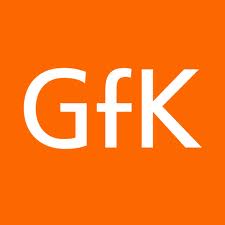 GfK findings on the photography market – first half of 2013
GfK findings on the photography market – first half of 2013
Nuremberg, 4 September 2013 – The photo market in Western Europe presents a fragmented picture: while segments under strong substitution pressure from smartphones are losing sales badly, high-value digital cameras are doing particularly well. Taken as a whole, the Western European photo market lost 10 percent in the first half of 2013 compared with the same period last year. These are GfK’s findings on the photography market, which are published to coincide with the IFA 2013 trade fair in Berlin.
Basic compact cameras with little zoom capability, in particular, are facing competition from smartphones with their camera functions. Sales were down 40 percent in the first half of 2013. However, top-quality digital camera sales increased, in part quite substantially, depending on their target group and intended area of application. For example, full-frame single-lens reflex cameras were up 26 percent. With a high average selling price of €2,245, they accounted for 14 percent of all cameras sold in terms of value and had a significantly favorable impact on retail sales. They just about make up for the falling sales of single-lens reflex cameras with smaller sensors [fewer pixels] (-10 percent) and compact mirror-less system cameras (-8 percent). Meanwhile, interchangeable lens system cameras now account for around half of all camera sales.
Fixed lens cameras improve significantly
More advanced fixed-lens cameras are also doing well. These are cameras with larger image sensors [more pixels], which registered a sales increase of around 7 percent. Selling at steadily high prices of around €450, they are part of trading up in the camera market. The boost from high-zoom cameras with 20x optical zoom and more is even more apparent, with sales improving by 44 percent. This segment accounts for more than one in every three euros spent on fixed-lens cameras. Sales of slim travel models which are 4 cm and thinner are growing particularly fast. Another pleasing point to note is that the average price level in the high-zoom range remained steady in the first half of the year at around €250. Between them, these segments accounted for more than 25 percent of total camera sales and more than 50 percent of fixed lens sales up to June 2013.
What happens in single-lens reflex and mirror-less cameras very much affects what happens to sales in the interchangeable lens market. Sales here were up 2 percent in the first half of 2013. In value terms, they already account for 22 percent of the photo market (cameras and lenses together). That shows how much potential there is for the accessory market as people move increasingly into high-end cameras.
In general, cameras are becoming increasingly connected. By June 2013, one in seven cameras sold could already share pictures via an integrated WLAN.
Smartphones may be causing decline on the low end of the camera market, but they are also introducing more people to photography than ever before. This presents a unique opportunity for inspiring interest in as many consumers as possible for this field, which may ultimately motivate them to buy increasingly high-end cameras.
The method
Through its retail panel, GfK regularly collects data on digital cameras, interchangeable lenses and other photo accessories in more than 60 countries worldwide. The present evaluation is based on the latest market trends in France, Germany, Italy, the Netherlands, Spain and the UK for the first half of 2013.
About GfK
GfK is one of the world’s largest research companies, with around 13,000 experts working to discover new insights into the way people live, think and shop, in over 100 markets, every day. GfK is constantly innovating and using the latest technologies and the smartest methodologies to give its clients the clearest understanding of the most important people in the world: their customers. In 2012, GfK’s sales amounted to €1.51 billion.
To find out more, visit www.gfk.com
